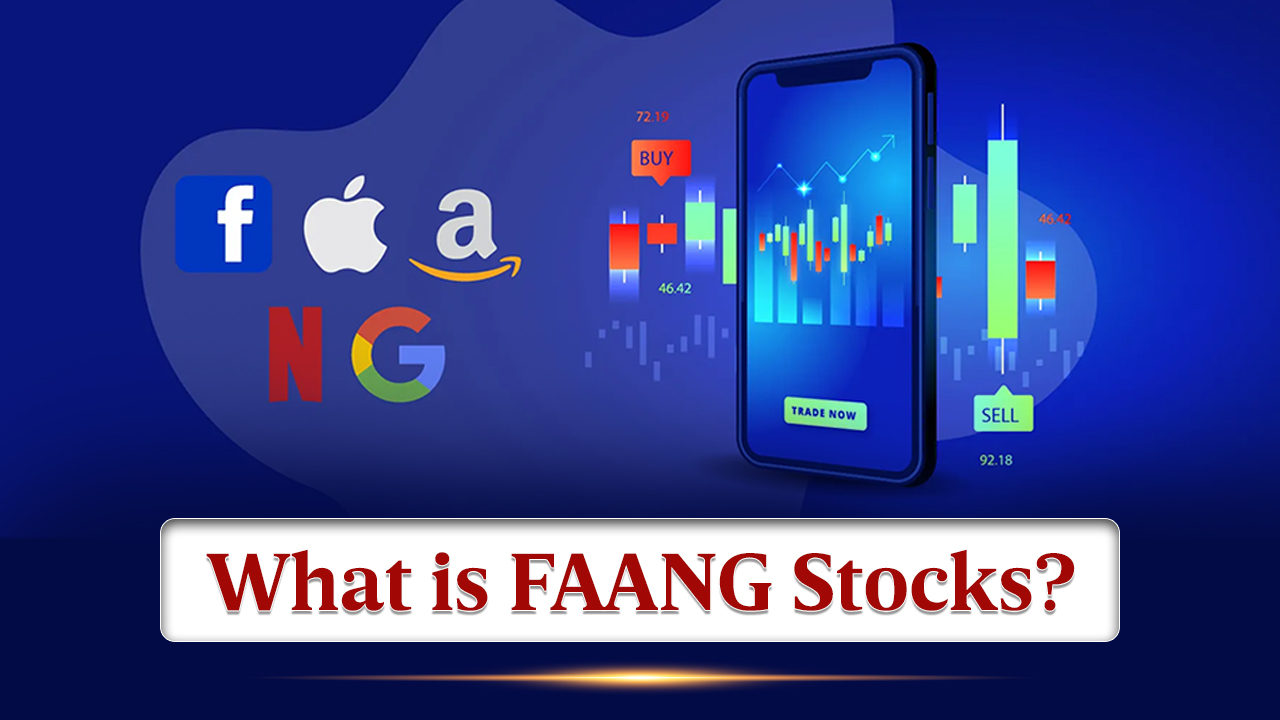FAANG is an acronym representing five of the most dominant and influential companies in the technology sector: Facebook (now Meta), Amazon, Apple, Netflix, and Google (now Alphabet). These companies have become household names, not just for their innovative products and services but also for their impact on the global financial markets.
Together, FAANG stocks are often seen as a barometer for the health of the tech sector and, more broadly, the entire stock market.
Their growth has been remarkable, attracting significant attention from both retail and institutional investors.
History of FAANG Stocks:
Each FAANG company has its own unique history of growth and success. Facebook, founded by Mark Zuckerberg in 2004, revolutionised social media, going public in 2012. Amazon, founded by Jeff Bezos in 1994, started as an online bookstore before transforming into the e-commerce and cloud computing giant it is today. Apple, co-founded by Steve Jobs, Steve Wozniak, and Ronald Wayne in 1976, became a leader in consumer electronics with groundbreaking products like the iPhone and iPad. Netflix began as a DVD rental service in 1997 but eventually pivoted to become a leader in online streaming. Finally, Google, founded by Larry Page and Sergey Brin in 1998, has grown from a search engine into a global tech leader, rebranding as Alphabet in 2015.
These companies’ journey from niche startups to tech behemoths has been marked by key milestones, including their initial public offerings (IPO) and strategic acquisitions. These companies didn’t just grow – they disrupted entire industries, changing the way we communicate, shop, watch content, and search for information.
Financial Performance of FAANG Companies:
FAANG companies are known for their impressive financial performance. Their collective market capitalisation exceeds trillions of dollars, making them some of the largest companies in the world. Over the years, these stocks have consistently delivered strong returns, driving growth for many investors.
Apple, for instance, was the first company to reach a $1 trillion market cap, followed by Amazon and Google. Facebook and Netflix, while not as large in market capitalisation, have seen tremendous growth in stock price. A significant portion of their revenue comes from diversified sources: Apple through hardware and services, Amazon through e-commerce and AWS, Google from advertising and cloud services, Facebook from social media advertising, and Netflix from subscription-based streaming.
Key Drivers of Growth in FAANG Stocks:
Several factors contribute to the growth of FAANG stocks. Innovation is at the heart of these companies, from Apple’s sleek designs and groundbreaking products to Amazon’s dominance in cloud computing through AWS. Their ability to stay ahead of the curve with new technologies, such as artificial intelligence (AI), machine learning, and data analytics, has been instrumental in maintaining their market leadership.
Another key driver is their global reach. FAANG companies have established a strong international presence, with billions of users and customers worldwide. This global footprint allows them to tap into emerging markets and scale their operations rapidly.
Additionally, their diversification into different industries has protected them from downturns in any single sector. For instance, Amazon has moved into cloud computing, and Google has invested heavily in AI and autonomous driving technologies.
Challenges Faced by FAANG Stocks:
Despite their success, FAANG companies face numerous challenges. One of the most significant is regulatory scrutiny. Governments worldwide are increasingly concerned about these companies’ influence and potential monopolistic practices. Antitrust lawsuits, especially in the U.S. and Europe, threaten to break up parts of these companies or limit their business practices.
Privacy and data security are other critical issues. With Facebook’s history of data breaches and Google's vast data collection practices, these companies often find themselves at the center of debates around user privacy.
Additionally, the tech landscape is always evolving, and FAANG companies must continuously fend off competition from emerging startups and established players in new industries. The rapid pace of technological change, coupled with geopolitical risks and economic factors like inflation and supply chain disruptions, also pose threats to their continued dominance.
Impact of FAANG on the Broader Market:
FAANG stocks are not just important to the tech sector; they are integral to the overall stock market. They have a significant weighting in major indices like the S&P 500 and NASDAQ, meaning that their performance can influence the entire market. When FAANG stocks soar, the market follows, and when they face headwinds, it can drag down the broader market.
FAANG companies also play a role in shaping the future of industries. These companies lead the charge in technological innovation from cloud computing to AI and streaming. Their investments and breakthroughs set trends for other companies to follow, affecting everything from consumer behavior to employment patterns.
Future Outlook for FAANG Stocks
Looking ahead, FAANG stocks are expected to remain key players in the stock market, but the future is not without challenges. Opportunities abound in areas like AI, cloud computing, and even the development of the metaverse. However, there are also potential disruptions on the horizon, such as increased regulatory pressure, rising competition from tech startups, and shifts in consumer behavior.
Investors will need to keep a close eye on these companies as they navigate these new frontiers. While the growth of FAANG stocks may slow from their explosive early years, their strong foundations and market leadership position them well for continued, albeit more measured, success.
Conclusion:
FAANG stocks have been a driving force in both the technology sector and the broader stock market. Their ability to innovate, adapt, and diversify has propelled them to the top of the business world. For investors, they represent a blend of growth and stability, with opportunities and risks that reflect the broader economy and tech trends. As these companies evolve, they will likely continue to shape the future of technology and finance for years to come.



















